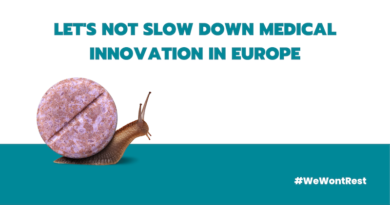
Moving from weakness to competitive advantage: high energy prices paving the way to the era of European electrification (2025-2030)
All around the world, the electrical grid is a reflection of political-economic centers and historical priority routes, since the late 19th century. The European Union is no different, the state of our electrical grids carries with it our various stories of integration, the most recent syncing of the Baltic states to the European continental grid and away from the Russian one in February 2025 being a real-time example of that. But the grid is certainly not about the past only. In fact, it is very much about the future and the visions for political-economic power underpinning it. In fact, one could say it reflects past visions of the future. Europe needs a new vision for its economic future and it actually starts from electrification and grids.
Currently, our electric grids are a good indication of where European integration: congested, rigid, slow-moving when it comes to adoption of innovation and not properly connecting European Member States with each other or European regions for that matter (thinking of Iberia’s far below 2.8% interconnection to the rest of continental Europe).
Managing these congestions have been estimated to have cost billions of Euros in 2023 alone1. Southeastern Europe is a region in the spotlight of this debate and it was mentioned in the recently launched Action Plan for Affordable Energy for its skyrocketing energy prices reached in the summer of 2024, of above 250E/MWh, resulting from the lack of cross-border capacity and flexibility2 . It is imperative that such issues are dealt with as a matter of urgent priority, not least because of the 46 million Europeans affected by energy poverty, many of whom are in this very region. To show the direct connection between interconnectivity and lowered energy prices, one needs to look no further than the example of Ireland and the UK. The moment the East-West interconnector went live in 2014, electricity prices dropped instantaneously. Equally so, following Brexit, the reduced electricity traded created higher price spikes on both sides. Now, with the help of certain innovative technologies, for example in the space of cables, one could even envision connecting clean electricity production in Romania to it’s end use in the Czech Republic.
According to the Grids Action Plan from 2023, 584bn Euros would be needed for investments in grids this decade alone. At the same time, a report by CurrENT estimates that a steady annual deployment of innovative grid technologies (such as Dynamic Line Rating, Advanced Power Flow Control, high-capacity conductors could save us700 billion Euros by 20403.
If we were to massively build up smart grid applications available for deployment within 3-6 months, in addition to fast-forwarding interconnectors build-out, long-distance cables and investing in innovative high-capacity and high-efficiency conductors, amplifying the capacity of the grids and their operations, one can safely assume this would lower prices across regions in the EU. It is important to note that the existing grid congestion is further exacerbated by the exponentially growing projects waiting to go online and the long waiting times they are usually faced with (several years). This model of European infrastructural loose interconnection is clearly outdated, yielding a disconnect are felt in the political-economic situation across Europe, including in our huge re-think of what continental wide European competitiveness is. The Draghi report went heavy on this topic, identifying grids and electrification as huge levers of necessary change and enablers for competitiveness. Beyond this rethink, the disconnect is felt in the electricity prices paid by citizens and industry alike across the continent. These costs come on top of the already high energy prices, therefore affecting the competitiveness of European businesses and impactingdirectly citizens. Electrification should in fact have emerged as the shining star of the Clean Industrial Deal. While it is of course across the various documents and it is mentioned in the competitiveness compass as a key enabler, it is not quite given the center stage that it requires. A 32% by 2030 only target for electrification is showing a modest, if not even shy vision for our future. Half of the 2020s are behind us but half of this decade is still ahead. Is it truly realistic to assume that we will focus on other things first and then catch-up with massive electrification in the 2030s? No, this part of the transition to a net-zero competitive economy is now. A more relevant target for electrification would have been 40% by 2030. If we are to move to visions of the future, the vision for our European grids is a pretty good indication of what Europe’s vision for its own future is.
A European SuperGrid for an European Electrified Union is a long overdue idea and it is needed for Europe to be a SuperPower in the 21st century and while this idea has been around for more than a decade, it’s time has come.
Only through Electrification, supported by innovative grids and the move towards a SuperGrid can we move beyond this weakness and harness our really competitive advantage in European cleantech, which has its strongest foothold in electrified technologies. We’d be supporting both demand creation and supply creation for the solutions to a more resilient, a smarter and cleaner European future.
__________________________________________________________________________________________________________
1 https://www.acer.europa.eu/sites/default/files/documents/Publications/ACER_2024_MMR_C rosszonal_electricity_trade_capacities.pdf
2 https://energy.ec.europa.eu/publications/action-plan-affordable-energy-unlocking-true- value-our-energy-union-secure-affordable-efficient-and_en




